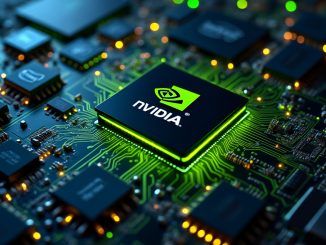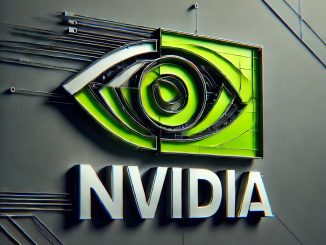
The race for AI supremacy has taken a new turn, shifting the battleground from software innovation to sheer computational horsepower. Tech giants are now engaging in a high-stakes competition, not just for the best algorithms or user interfaces, but for who can amass the largest number of Nvidia’s artificial intelligence (AI) chips into what are being termed as super clusters. This development, as noted by The Wall Street Journal, marks a significant evolution in the AI landscape where raw processing power becomes a critical metric of success.
Elon Musk’s xAI, for instance, has demonstrated this trend by establishing the Colossus supercomputer in Memphis, integrating 100,000 Nvidia Hopper AI chips in a remarkably short timeframe. This move isn’t just about having computing power; it’s a bold statement in the tech world about xAI’s commitment to pushing AI boundaries.
Similarly, Mark Zuckerberg of Meta (META) has boasted about training their latest AI models on chip clusters that dwarf others in the industry, signaling Meta’s intent to stay at the forefront of AI development. Previously, clusters with tens of thousands of chips were considered massive; now, the bar has been raised significantly, with clusters reaching into the hundred thousands.
This shift towards larger super clusters isn’t without its economic implications. Nvidia (NVDA), the primary beneficiary of this trend, has seen its revenue multiply from $7 billion to over $35 billion quarterly, propelling it to become one of the world’s most valuable publicly listed companies with a current market cap of $3.48T. This growth is fueled not only by the sale of chips but also by the increased demand for Nvidia’s networking solutions necessary to interconnect these vast arrays of processors.
Yet, this leap towards more chips brings with it a set of challenges and uncertainties. The assumption that bigger clusters will inherently produce better AI models remains unproven. Nvidia’s CEO, Jensen Huang, has expressed optimism about the scalability of AI models with larger computing setups, particularly with the upcoming Blackwell chips, which promise even greater computational capabilities.
However, the practicalities of managing such large-scale systems pose significant hurdles. The operational complexity increases with size, as does the frequency of hardware failures, which can severely hamper efficiency. A study by Meta, for example, highlighted how even a smaller cluster of 16,000 GPUs encountered numerous issues during the training of its AI models.
Moreover, the financial investment required for these super clusters is staggering. The cost of constructing a cluster with 100,000 Blackwell chips could exceed $3 billion, excluding the infrastructure costs like cooling systems, which are crucial yet another challenge. Liquid cooling systems are becoming the norm as traditional air cooling fails to keep up with the heat generated by these dense computational environments.
This trend also raises questions about the sustainability of such growth. Will the increase in chip count continue to yield proportional advancements in AI capabilities? Or will there be a point of diminishing returns where the complexity and cost of managing these super clusters outweigh their benefits?
In this new era of AI development, tech companies like xAI, Meta, Alphabet (GOOG, GOOGL), OpenAI, and Microsoft (MSFT) are not just competing on innovation but on the sheer scale of their computing resources. The industry watches closely, as the outcome of this race could redefine how AI is developed and deployed, potentially setting new standards for what it means to be at the cutting edge of technology.
- Bulenox: Get 45% to 91% OFF ... Use Discount Code: UNO
- Risk Our Money Not Yours | Get 50% to 90% OFF ... Use Discount Code: MMBVBKSM
Disclaimer: This page contains affiliate links. If you choose to make a purchase after clicking a link, we may receive a commission at no additional cost to you. Thank you for your support!





Leave a Reply